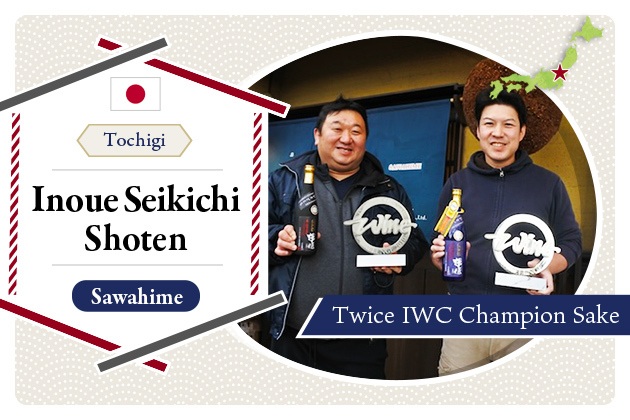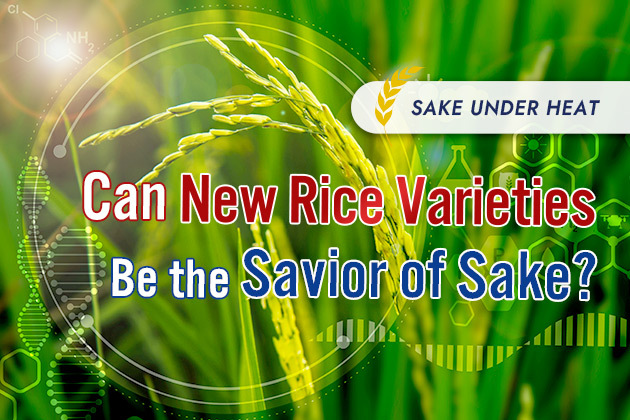
2023.11
29
The Key to Flavor: Learning about Yeast Used in Sake Brewing
It’s common to focus on the many varieties of rice used to make sake, but yeast, an ingredient that is often overlooked, has many varieties and plays an incredibly important role in determining the flavor profile of a sake. In fact, many breweries are not only experimenting with new types of yeast, but they are calling out yeast varieties on labels.
So, if yeast plays such an important role in determining a sake profile, how exactly does it affect flavor and character? Let’s take a look.
What is yeast?
The yeast used for sake fermentation is a type of fungus whose biological name is S. cerevisiae (Saccharomyces cerevisiae).
All alcoholic beverages involve fermentation, which is the process of yeast converting sugar to produce alcohol (ethanol) and carbon dioxide.
S. cerevisiae is sometimes used not only for sake but also for wine and beer, of which the one suitable for sake fermentation is called "seishu kobo (sake yeast)."
Now before yeast can do their work in the sake fermentation, there is one step that needs to happen. Yeast consumes sugar to make alcohol, but rice, a main ingredient in sake, only contains starch. So, for the fermentation to work, the starch in rice needs to be converted to sugar. Koji, another critical ingredient in sake, helps with this conversion. Koji mold, known scientifically as A. oryzae (Aspergillus oryzae) contains an enzyme that unravels the starch molecules and converts them to sugar. Once starch is converted to sugar, then the yeast begin their process of converting the sugar to alcohol.
Effect of yeast on sake flavor
Yeast does more than just convert sugar into alcohol. During the fermentation process, yeast produces various components other than alcohol. Among these are aroma and acidity, which have a significant impact on the flavor of sake.
There are two key aroma compounds found in many sake:
・Ethyl caproate, which gives sake aromas of apples and peaches
・Isoamyl acetate, which gives sake aromas of melon and banana
Both of these compounds give sake its distinctive fruity flavor. The fruity aromas provided by the yeast can range in intensity too, with some being very subtle and layered and others being very intense, tropical, and highly fragrant. However, not all yeasts give sake fruity flavors. Some yeasts are prized for how little aroma they provide to a sake. This is the case with a brewer who wants to make a simple light and clean sake. So, yeasts play an important role in not only providing aromas, but how intense or non-intense those aromas can be.
Yeasts are also important in creating acids in sake. The most common acids produced in sake are malic acid and succinic acid.
Malic acid is an ingredient that gives a refreshing sour taste. When a sweet sake contains a moderate proportion of malic acid, it shows a refreshing balance of fruity flavor. Succinic acid is more associated with umami, like you find in shellfish. It’s rare to find sake that contains a lot of succinic acid, but when you do there will be a strong sense of umami.
In addition to these aromatic components and acids, actual sake contains a variety of other components, the balance of which determines the aroma and taste.
Typical yeast types
There are many yeasts that give sake different characteristics, but here are a few that are common in sake.
Kyokai Yeast
The Brewing Society of Japan (Jozo Kyokai) cultivates yeasts with excellent characteristics and distributes them to sake breweries in order to help breweries brew sake with consistent results. These yeasts are called Kyokai Yeast. Most sake is made with these types of yeast.
The names of the Kyokai Yeast are numbered consecutively, such as "No. 6," "No. 7 ," and so on. The Kyokai yeasts brought consistency in fermentation results, but some yeasts can also bring significant bubble formations or foam, which can take up a lot of room in the tank and make tanks more difficult to clean. To remedy high bubble formations or foam, foamless yeasts were developed. So, if we brewer wanted to use a Kyokai yeast No. 7, but wanted a foamless version, they would purchase Kyokai yeast No. 701. The “01” at the end of the yeast indicates that the yeast will not produce any foam during the fermentation process, but for all other purposes, it functions the same as the “foaming yeast”.
The following table summarizes some of the most common types of Kyokai Yeast and their general characteristics.
| Name | Origin | Characteristics |
|---|---|---|
| No.6 | Aramasa (Akita) | No.6 is the oldest yeast currently distributed by the Brewing Society of Japan, and any Kyokai Yeast discovered after it is said to be very similar in its genetic makeup. It has strong fermentation power, a slightly low aroma, and a light flavor suited for clean sake. |
| No.7 | Miyasaka Brewing Company (Nagano) | No.7 has strong fermentation power and a gorgeous aroma, and can be used for a wide range of sake, from futsushu to ginjo type. It is currently the most widely used yeast by sake breweries. |
| No.9 | Kumamoto Sake Brewing Research Institute (Kumamoto) | It is suitable for ginjo-style sake because it produces low acidity and gorgeous aroma, and hisrtorically it was the most common yeast used for sake entered in the Annual Japan Sake Awards. The yeast, also called Kumamoto Yeast, is associaterd with the term "YK35" (Yamadanishiki, Kumamoto Yeast, 35% polishing ratio) which becam a formula for sake likely to win awards. |
| No.1801 | The Brewing Society of Japan | No.1801 was created by crossbreeding No. 9 and No. 1601. It has an extremely floral aroma and the benefit of producing the lowest amount of isoamyl alcohol, the cause of musty aromas, of any Kyokai Yeast. |
| Red Sake Yeast | The Brewing Society of Japan | Derived from No. 10. The yeast develops a red color and is used to make pink-colored nigori sake. It has low fermentation power and produces little acid. |
Prefectural Yeast
In addition to the Brewing Society of Japan, each prefecture has its own testing and research institute that develops, cultivates, and distributes its own yeast.
Akita, Shizuoka, Nagano, and Ehime prefectures in particular have been developing their own yeasts for many years, and many sake products are made with prefectural yeasts. The following table shows typical prefectural yeasts and their general characteristics.
| Prefecture | Name | Characteristics |
|---|---|---|
| Akita | AK-1 | AK-1 helped 25 breweries from Akita Prefecture win gold medals at the Annual Japan Sake Awards 1991, ranking first among all prefectures. It was later also registered as Kyokai No.1501 Yeast. |
| Shizuoka | HD-1 | HD-1 contributed to 17 of the 21 breweries from Shizuoka Prefecture that entered their products in the Annual Japan Sake Awards 1986 winning prizes (10 of them gold). |
| Nagano | Nagano C Yeast/Alps Yeast | Nagano C Yeast has a very floral aroma and helped Nagano Prefecture win the first number of gold medals at the Annual Japan Sake Awards 1997. |
| Ehime | EK-1 | EK-1 led to Ehime Prefecture winning 13 awards (including 11 gold medals) at the Annual Japan Sake Awards 2002, a breakthrough from only a few breweries in the past. |
Others
There are various other yeasts in addition to those introduced above.
A typical example is the flower yeast developed by Tokyo University of Agriculture. Yeast is found in various places in nature, such as flowers and fruits. Flower yeast can be isolated in various flower species and cultivated for use in sake fermentation. Currently, yeasts isolated from more than 10 types of flowers, including Japanese poppy, marigold, and abelia, have been developed. The characteristics vary, but most of them produce a gorgeous aroma of ethyl caproate type – apple and peach aromas.
Recently, using wine yeast to make sake has become a hot topic in sake. When compared to sake yeast, wine yeast has less amino acid and succinic acid, and produces more malic acid and acetic acid, which gives sake a pleasantly sour flavor and long finish.
Then there are breweries that don’t use any yeast at all, well not yeast provided by the Brewing Society of Japan. This type of yeast is ambient yeast or yeast that simply lives naturally in the brewery. Sake made with this type of yeast can also have locally cultivated yeasts added to the sake or the sake can be completely made with ambient yeast. As ambient yeast can vary from brewery to brewery, not all breweries have the proper environment to make sake from this type of yeast and rely on the Brewing Society to provide yeast.
Summary
A brewer has a myriad of yeast options at their disposal. The options have a big impact on how a sake can taste like the types of aromas or how intense those aromas are, they can affect flavor depending on the types of acids they produce, and they can make working with sake easier by providing non-foaming versions. Needless to say the choice of yeast is critical when making certain styles of sake.
Trained sake tasters often say that they can guess the type of yeast with a certain degree of certainty, but that it is difficult to guess the type of rice used. If you pay attention to the yeast used when drinking sake from now on, you will be able to enjoy a more fun sake life!
Pickup Articles
2019.01.18
2019.01.25
Trending Articles
Popular Articles
Recent Articles













